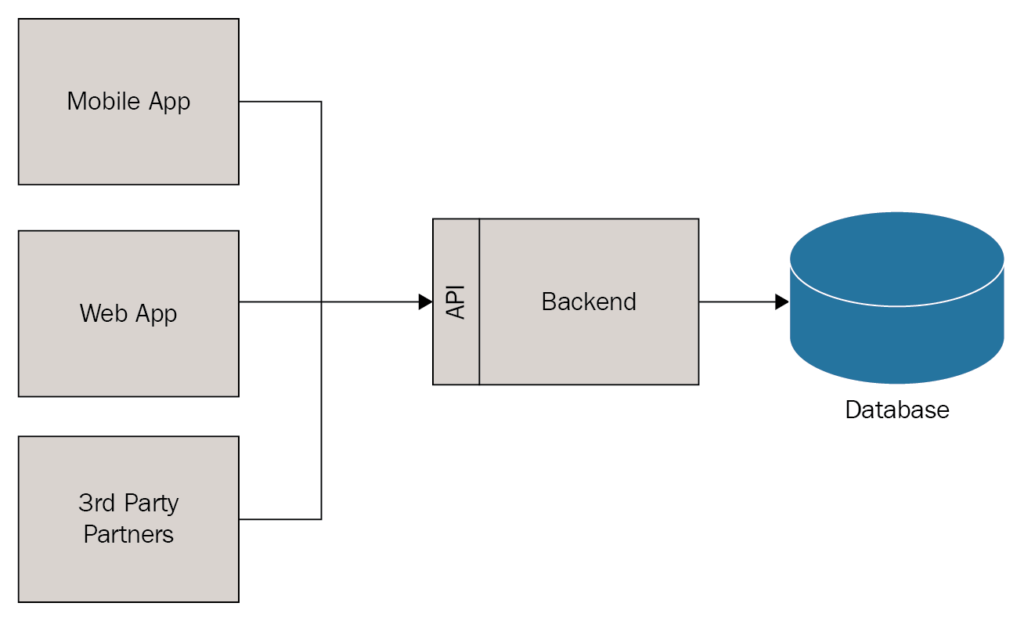Back-end developers play a crucial role in software application development. With more interactions and transactions happening online, customers expect seamless experiences across devices. A poorly built back-end can result in slow loading times, lost data, scalability issues, and an overall buggy experience. Investing in solid back-end development now will ensure your business is ready for the future.
This guide will cover the core components of back-end development, common back-end languages, frameworks, and tools. We’ll also explain how back-end development differs from the front-end.
What Is Backend Development?

Back-end development, often undertaken by a dedicated development team, is a key sphere in both app and web development. It deals with the server-side functions of web applications, including data management, user authorization, and handling complex algorithms, calculations, and analytics.
If your company requires expertise in areas such as algorithms, databases and their structures, natural language processing, and distributed systems, then you may consider using low-code solutions, hiring a professional back-end developers or contractors involvement.
Front-End vs. Back-End Development

Despite some beliefs, the difference between a backend developer vs front end developer is huge! While front-end developers focus on the client side of software development, back-end developers work with servers.
Front-end developers manage every aspect that website or app users see and interact with. They focus on the user interface (UI) and user experience (UX). This includes bars, menus, forms, buttons, and any other visual element users see and interact with. Front-end developers usually work with the tools, like CSS, HTML, and JavaScript.
In contrast to front-end developers, back-end developers create and manage systems that store and secure all the information and data used by applications and websites. Entrepreneurs should remember that being a back-end developer working with data processing, application and data integration, storage and server-side logic, APIs, etc.
Databases, like MySQL or PostgreSQL, are part of backend technology developers use to manage and store data.
Nevertheless, front and back end developers can and do work together. Together, they can create useful web applications that satisfy user demands. To ensure the code complies with the best practices and project criteria, developers may check each other’s work. Collaboration and communication are crucial to the success of any web development project.
When it comes to programming languages and frameworks, there’s a whole bunch to choose from. But a few tend to be the most popular and widespread — the ones you may want to look for when you’re thinking about developing a new product or hiring a coder.
Some of Most Popular Back-End Languages

Back-end developers can use multiple programming languages for their work. Let’s briefly discuss the most common backend programming languages.
Python
It is worth investing in young talents as Python is a popular language among beginners. It is so widespread because of its simplicity and the huge amount of online free learning resources. This language focuses on working with data-contained objects. Thanks to Python, web developers build applications that are scalable, side-graded, or can be updated fast and easily.
PHP
Hypertext preprocessor (PHP) is helpful in many different fields of web design and development. Developers use PHP for server-side functionality because it provides deployment tools and features that make submitting and approving your code simpler. This is because developers can integrate PHP code into HTML — a front-end tool for creating online apps and pages.
Java
Java is a language for programmers who build robust, large-scale web applications that need high levels of security to protect data. Java’s flexibility to run on any operating system makes it popular in web development. It’s a flexible tool developers use to build online, mobile, and desktop tools and apps on various digital platforms.
JavaScript
Because of its simple setup procedure and large community, programmers often pick JavaScript for their development projects. Hiring someone familiar with this language is worth it if you want your product to have effective and reliable front-end and back-end functionality.
SQL
Backend developers often choose structured query language (SQL) for administrative and organizational duties. They often use this language to interact with data, such as retrieving a user’s account information upon request.
Back-End Tools and Technology

Back-end programmers have access to a wide range of tools to do their tasks. All you have to do is choose and apply the right for your needs.
Databases
1. Oracle database
Oracle is considered one of the most popular tools for back-end development. It provides simple data migration for onboarding your application. Program deployment options include on-site and cloud-based solutions. Additionally, the entire application is built for cloud databases used in large-scale enterprises.
2. MongoDB
Backend developers use MongoDB, a database that is scalable, portable, and open-source. Mongo provides JSON-like documents with guidelines for storing and retrieving data.
3. MySQL
Although it may not always appear as the most trendy database, it provides extraordinary reliability. MySQL guarantees great support for common programming languages. Support for secured connections is also available.
Don’t forget to check out these database backend tools: PostgreSQL, Microsoft SQL Server, Couchbase, Cassandra, and Redis.
Web servers
1. Apache HTTP server
It is a customizable web server programmers can modify to suit the needs of their program. Apache powers more than half of the websites in the world and is compatible with almost every operating system, including Linux. You’ll also find support for XML, session tracking, FTP, and CGI.
2. Nginx
You can find all the functions you need in a web server with NGINX for fast web application growth. For your server architecture, there is an NGINX Plus edition that enables customization and extra functionality. You can also use the NGINX technology to manage APIs.
3. Microsoft Internet Information Services (IIS)
Microsoft IIS is primarily designed for enterprises and supports several HTTP protocols. Microsoft IIS supports multiple authentication, development, and expansion methods through its modular architecture.
API development tools
1. Django rest framework
Django is a back-end web development framework designed specifically for Python that makes it simple to build apps. Scalability, rapid development, and extensibility are its main features.
2. Node.js
For JavaScript programmers, Node.js is a back-end technology that expands JavaScript libraries, frameworks, and tools.
3. Ruby
Developers can use Ruby-on-Rails for both frontend and backend development of your website or application. Although this framework may not seem like much on the surface, it offers a solid basis and common features that you will eventually appreciate and enjoy.
You can find these backend development technologies useful: Express.js, Spring Boot, ASP.NET, Apollo Server, Sangria (Scala)
The Importance of Back-End Development for Businesses

Backend development assures the accurate, efficient, and dependable running of online apps and websites. It handles business databases, and server configuration, constantly improving application performance and user experience.
Ensuring system scalability and performance
Software applications for expanding enterprises must scale to meet increasing traffic, hotfixes, and storage needs. A qualitative back-end development team can guarantee the ability of the system to handle the company`s growth, adapt to changes and new requirements, and work smoothly with other services.
To fulfill performance requirements, businesses that want to integrate certain features (like search functions or product filters) would need an expert developer to handle these features and meet expectations.
Mastering Custom Application Development: The Importance of Back-End Expertise
A slick user interface may be the face of an application, but it’s the back-end that enables the complex functionality, performance, and scalability users demand. Mastering back-end development is crucial for building robust custom applications tailored to an organization’s specific needs. The back-end code handles everything from securely accessing databases to integrating with other systems to deploying machine learning models. Doing the back-end right ensures an application can handle user load, scale up without errors or slowdowns, and avoid unnecessary costs from inefficient code.
Understanding the importance of implementing the back-end properly to meet requirements around performance, scalability, and cost-effectiveness is what separates an average custom application development project from a great one.
Sigma Software developers have a wide range of language expertise, including PHP, Dot Net, Python, JavaScript, AngularJS, and more with proven successful backend development projects of any complexity.










Leave a Reply